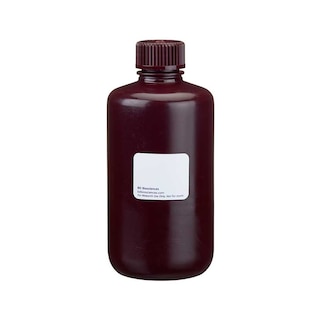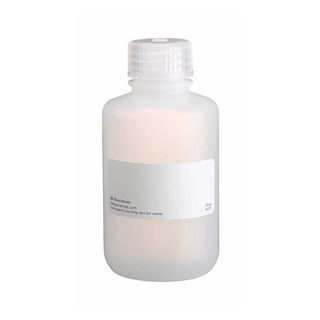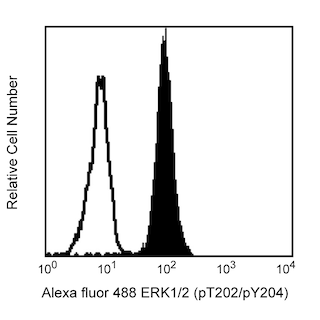-
Reagents
- Flow Cytometry Reagents
-
Western Blotting and Molecular Reagents
- Immunoassay Reagents
-
Single-Cell Multiomics Reagents
- BD® AbSeq Assay
- BD Rhapsody™ Accessory Kits
- BD® Single-Cell Multiplexing Kit
- BD Rhapsody™ Targeted mRNA Kits
- BD Rhapsody™ Whole Transcriptome Analysis (WTA) Amplification Kit
- BD Rhapsody™ TCR/BCR Profiling Assays for Human and Mouse
- BD® OMICS-Guard Sample Preservation Buffer
- BD Rhapsody™ ATAC-Seq Assays
-
Functional Assays
-
Microscopy and Imaging Reagents
-
Cell Preparation and Separation Reagents
-
Training
- Flow Cytometry Basic Training
-
Product-Based Training
- BD FACSDiscover™ S8 Cell Sorter Product Training
- Accuri C6 Plus Product-Based Training
- FACSAria Product Based Training
- FACSCanto Product-Based Training
- FACSLyric Product-Based Training
- FACSMelody Product-Based Training
- FACSymphony Product-Based Training
- HTS Product-Based Training
- LSRFortessa Product-Based Training
- Advanced Training
-
- BD® AbSeq Assay
- BD Rhapsody™ Accessory Kits
- BD® Single-Cell Multiplexing Kit
- BD Rhapsody™ Targeted mRNA Kits
- BD Rhapsody™ Whole Transcriptome Analysis (WTA) Amplification Kit
- BD Rhapsody™ TCR/BCR Profiling Assays for Human and Mouse
- BD® OMICS-Guard Sample Preservation Buffer
- BD Rhapsody™ ATAC-Seq Assays
-
- BD FACSDiscover™ S8 Cell Sorter Product Training
- Accuri C6 Plus Product-Based Training
- FACSAria Product Based Training
- FACSCanto Product-Based Training
- FACSLyric Product-Based Training
- FACSMelody Product-Based Training
- FACSymphony Product-Based Training
- HTS Product-Based Training
- LSRFortessa Product-Based Training
- United States (English)
-
Change country/language
Old Browser
This page has been recently translated and is available in French now.
Looks like you're visiting us from {countryName}.
Would you like to stay on the current country site or be switched to your country?







Analysis of eIF4E (pS209) in monocytes. Human peripheral blood mononuclear cells (PBMC) were either stimulated with 40 nM Phorbol 12-myristate 13-acetate (PMA, Sigma-Aldrich Cat. No. P8139) for 15 minutes (shaded histogram) or unstimulated (open histogram). The cells were fixed (BD Cytofix™ buffer, Cat. No. 554655) for 10 minutes, then permeabilized (BD Phosflow™ Perm Buffer II, Cat. No. 558052) on ice for at least 30 minutes, and then stained with Alexa Fluor® 647 Mouse anti-elF4E (pS209, Cat. No. 560240). Monocytes were selected by scatter profile. Flow cytometry was performed on a BD FACSArray™ bioanalyzer system.

The specificity of Alexa Fluor® 647 Mouse anti-elF4E(pS209) was confirmed by western blot analysis. Lysates from control populations (left blot) and PMA-treated populations (right blot) were treated with unconjugated antibody. ElF4E (pS209) is identified as a band of 25 kDa, with increased intensity in the treated cells.



BD™ Phosflow Alexa Fluor® 647 Mouse anti-elF4E (pS209)

BD™ Phosflow Alexa Fluor® 647 Mouse anti-elF4E (pS209)

BD™ Phosflow Alexa Fluor® 647 Mouse anti-elF4E (pS209)

Regulatory Status Legend
Any use of products other than the permitted use without the express written authorization of Becton, Dickinson and Company is strictly prohibited.
Preparation And Storage
Recommended Assay Procedures
Either BD Cytofix™ fixation buffer or BD Phosflow™ Fix Buffer I may be used for cell fixation. Any of the three BD Phosflow™ permeabilization buffers may be used.
Product Notices
- This reagent has been pre-diluted for use at the recommended Volume per Test. We typically use 1 × 10^6 cells in a 100-µl experimental sample (a test).
- Source of all serum proteins is from USDA inspected abattoirs located in the United States.
- Caution: Sodium azide yields highly toxic hydrazoic acid under acidic conditions. Dilute azide compounds in running water before discarding to avoid accumulation of potentially explosive deposits in plumbing.
- Alexa Fluor® 647 fluorochrome emission is collected at the same instrument settings as for allophycocyanin (APC).
- For fluorochrome spectra and suitable instrument settings, please refer to our Multicolor Flow Cytometry web page at www.bdbiosciences.com/colors.
- The Alexa Fluor®, Pacific Blue™, and Cascade Blue® dye antibody conjugates in this product are sold under license from Molecular Probes, Inc. for research use only, excluding use in combination with microarrays, or as analyte specific reagents. The Alexa Fluor® dyes (except for Alexa Fluor® 430), Pacific Blue™ dye, and Cascade Blue® dye are covered by pending and issued patents.
- Alexa Fluor® is a registered trademark of Molecular Probes, Inc., Eugene, OR.
- Please refer to www.bdbiosciences.com/us/s/resources for technical protocols.
Companion Products






The eukaryotic translation Initiation Factor 4E (eIF4E) is a 25-kDa phosphoprotein that specifically binds to the 7-methylguanosine-containing cap of mRNA. eIF4E is the rate-limiting component for the initiation of cap-dependent translation by the eIF4F translation initiation complex, which is composed of eIF4E, eIF4G, and eIF4A. This complex promotes the unwinding of secondary structure at the 5' untranslated region of mRNA that is necessary to expose and locate the AUG initiation codon. Other functions of eIF4E have been identified, such as promoting the export of mRNAs that are involved in cell cycle progression from the nucleus and differentially regulating the translation of certain mRNAs in the cytoplasm. Three mechanisms for eIF4E regulation have been identified: Mnk1-mediated phosphorylation on serine 209 (S209) is required for eIF4E binding to the cap structure; over-expression of phosphorylated eIF4E can lead to increased cell proliferation, suppression of apoptosis, and a transformed phenotype; and interactions with nonphosphorylated eIF4E-binding proteins inhibit the formation of the eIF4F complex.
The J77-925 monoclonal antibody recognizes the phosphorylated S209 (pS209) of eIF4E.
Development References (5)
-
Culjkovic B, Topisirovic I, Borden KLB. Controlling gene expression through RNA regulons. The role of the eukaryotic translation initiation factor eIF4E. Cell Cycle. 2007; 6(1):65-69. (Biology).
-
Grolleau A, Kaplan MJ, Hanash SM, Beretta L, Richardson B. Impaired translational response and increased protein kinase PKR expression in T cells from lupus patients. J Clin Invest. 2000; 106(12):1561-1568. (Biology).
-
Mendez R, Myers Jr MG, White MF, Rhoads RE. Stimulation of protein synthesis, eukaryotic translation initiation factor 4E phosphorylation, and PHAS-I phosphorylation by insulin requires insulin receptor substrate 1 and phosphatidylinositol 3-kinase. Mol Cell Biol. 1996; 16(6):2857-2864. (Biology). View Reference
-
Waskiewicz AJ, Flynn A, Proud CG, Cooper JA. Mitogen-activated protein kinases activate the serine/threonine kinases Mnk1 and Mnk2. EMBO J. 1997; 16(8):1909-1920. (Biology). View Reference
-
Wendel H-G, Silva RLA, Malina A, et al. Dissecting eIF4E action in tumorigenesis. Genes Dev. 2007; 21:3232-3237. (Biology).
Please refer to Support Documents for Quality Certificates
Global - Refer to manufacturer's instructions for use and related User Manuals and Technical data sheets before using this products as described
Comparisons, where applicable, are made against older BD Technology, manual methods or are general performance claims. Comparisons are not made against non-BD technologies, unless otherwise noted.
For Research Use Only. Not for use in diagnostic or therapeutic procedures.
Report a Site Issue
This form is intended to help us improve our website experience. For other support, please visit our Contact Us page.